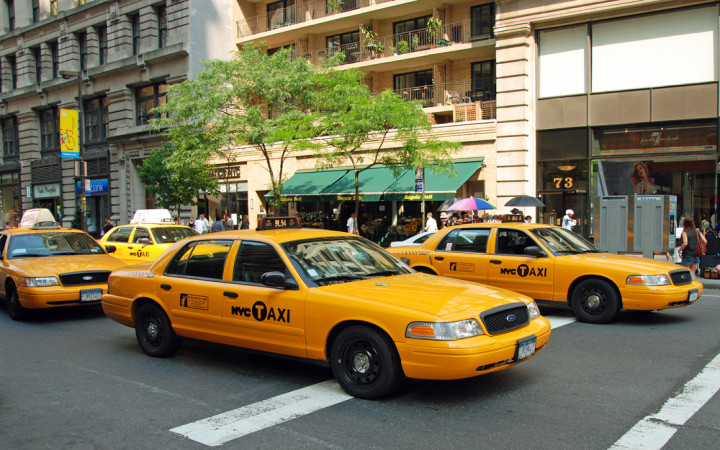Today’s Wonder of the Day was inspired by jamal. jamal Wonders, “Why do people sit in the backseat of a taxi?” Thanks for WONDERing with us, jamal!
“Taxi!" Have you ever heard that word screamed along the streets of a busy city? If you live in or have ever been to New York City, then the answer is definitely “Yes!" Taxis are a common sight in many major metropolitan areas.
Taxis — also called taxicabs or cabs — are vehicles with drivers you can hire to drive you to a destination for a fee. The name taxicab was a contraction of the translation of the French words for the same vehicles: “taximeter cabriolet."
Taxis got started as horse-drawn carriages along the streets of London and Paris in the early 1600s. Today, many taxis are bright yellow sedans that people can easily find on busy streets. Not all taxis have four wheels, though! Some have three wheels, others have two and some have none at all!
One unique form of two- or three-wheel taxi is the rickshaw. There are several types of rickshaws. One of the most common is the cycle rickshaw, also called a bike taxi or pedicab.
Cycle rickshaws are tricycles designed to carry passengers behind a driver. Cycle rickshaws are used in many large cities around the world. They're very common throughout Asia.
Another popular, older version of the rickshaw is the pulled rickshaw. These vehicles are two-wheeled carts — often made of bamboo — pulled by a human driver called a runner. These rickshaws usually carry one or two passengers.
The word “rickshaw" comes from the Japanese words meaning “human-powered vehicle." Rickshaws got their start in Japan around 1868. They became popular because they were easier to use and faster in large cities than horse-drawn vehicles.
No one knows for sure who invented the rickshaw. Some people believe it was American blacksmith Albert Tolman or American missionary Jonathan Scobie. Others believe it was Tokyo restaurant owner Izumi Yosuke. Whoever invented the rickshaw, there were over 40,000 of them on the streets of Tokyo by 1872.
Humans aren't the only engines for taxis, though. Hansom cabs are horse-drawn carriages that are still used today for quaint tours in New York City and other large cities around the world.
Some taxis don't even operate on the ground, though. You can take a taxi on the water! For example, ferries and water buses provide public transportation across many different bodies of water. In some European cities, you can also take a gondola around the waterways of the city!




